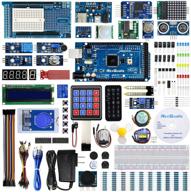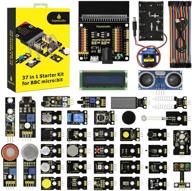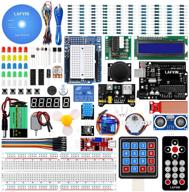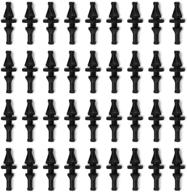
Review on ⚡️ 5V Relay Module for Arduino Raspberry Pi DSP AVR PIC ARM - JBtek 4 Channel by Terrance Haralson

THERE ARE LOTS OF DEFINFORMATION IN THE REVIEWS, PLEASE READ
Self-Documentation: Since there is no documentation, I was very skeptical that this device was trying to deliver too much current to my RasPi's GPIO pins (which that can only drain/source no more than 16mA per contact). Reading the specs for each component "confirmed" this with an optocoupler (817C) showing a normal operating current of 20mA - wow! on the IN'X' pins, which is within the tolerances of the RasPi (most Arduinos can draw/source 40mA or so, so there are even fewer problems). The reason is that there is a 1kΩ resistor in series with the optocoupler and the LED, so basically 2 LEDs and a 1kΩ resistor (the input side of the optocoupler is just an LED). Why did they force the optocoupler to work with suboptimal current? ? This allows the relay to be turned off when using 3.3V, which is common on Arduino and is the only voltage the Rasp Pi's GPIO can handle. ): Arduino: Most Arduino boards can handle DC I/O up to 40mA (this relay module only draws 2.1mA from the I/O pin). You probably won't come across a microcontroller that can't handle that current (if you do, that means you're probably an embedded systems designer and this guide isn't for you). Some Arudinos can be operated with 3.3 V (not USB). In this case you need a separate 5V circuit to power the relay module. can only accept DC I/O up to 16mA. This is also still within the acceptable range. We're using a Raspberry Pi power rail, the current supported will depend on the USB power source you choose - as long as you're using a 2A charger, as you should, you won't run into any problems. Relay Board: There are two rows. Input pins (GND IN1 IN2 IN3 IN4 VCC) and (JD-VCC VCC), the latter supplied with a jumper connecting the pins (leave jumper on!). Connect a wire from GND on your device to GND on the relay module. Connect a wire from the microcontroller's 5V pin to the VCC pin, which is next to IN4 (not the one next to JD-VCC!). Also note that the 5V pin I mentioned is the actual 5V micro rail, not the GPIO or I/O pin you will be using to trigger the relay. Finally, connect a GPIO or digital I/O pin to IN1 and set the pin in the software to low or 0V to enable it and to high or 3.3-5 V to disable it. 5V rail or if your board only works with a maximum voltage of 3.3V you will need to use an additional power supply to power the relay.
- Computers and Accessories
- High Price
New products
Comments (0)
Top products in 🖥️. Single Board Computers

REXQualis Comprehensive Starter Kit with Arduino MEGA 2560 & Detailed Tutorial for Arduino IDE Compatibility

11 Review

🎁 Ultimate BBC Micro bit Sensor Starter Kit: Keyestudio 37-in-1 Box with Tutorial, Compatible with V1.5 & V2, Gift for Kids and Adults (Microbit Board Not Included)

11 Review

LAFVIN Super Starter Kit for Arduino R3 Mega2560 Mega328 Nano with Detailed Tutorial - Compatible with Arduino IDE

11 Review

Vilros Raspberry Pi 4 4GB Complete Starter Kit - Black Fan-Cooled Aluminum Case for Heavy-Duty Performance

12 Review
Another interesting products

MacBook Retina 13-inch (A1425, A1502) and 🔩 15-inch (A1398) Bottom Case Screw Set with Pentalobe Screwdriver

11 Review

🖥️ Helifouner 450-Piece Computer Standoffs Spacer Screws Kit: Ideal for Hard Drive, Motherboard, Fan, Power Graphics & Computer Cases

10 Review

uxcell 3.5" HDD Screw Black 200pcs for Computer PC Case - Flat Phillips Head - 6#-32 - Hard Drive Fasteners

10 Review

36-Pack Black Rubber PC CPU/Case Fan Screws/Rivets Set for Computer

11 Review

